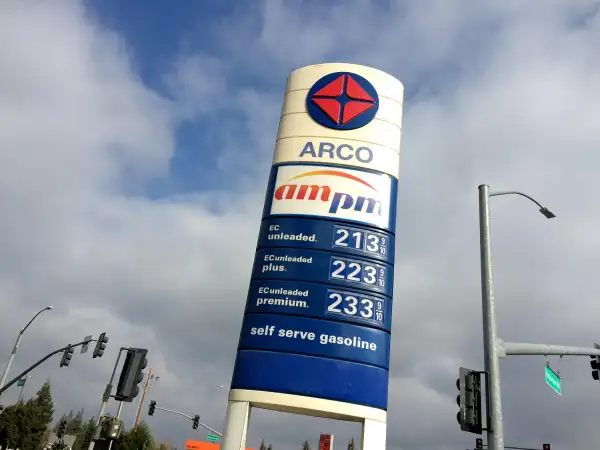$2 Gas Should Be Making a Comeback Soon

The current disconnect between low oil prices and relatively expensive gas prices has understandably been frustrating for American drivers. Oil prices are at a six-year low, so on the surface it makes little sense that prices at the pump would be soaring.
For the most part, gas prices are out of whack in two areas of the country—the Midwest and West Coast—and high prices there have driven the national average upward, to $2.66 today from $2.58 a week ago. Thankfully, the reasons for disproportionally high prices in these regions are expected to be addressed in the near future, and experts say we should be back on track for $2 gas by this autumn or early winter.
Specifically, refinery problems in California and Indiana have been blamed for the broader gas price hikes. An explosion at an Exxon Mobil refinery in Torrance, Calif., earlier this year has led to stubbornly high gas prices in California, including a few dramatic price hikes this summer as demand seems to have exceeded supply. (High prices in California and the West Coast have also led drivers to complain of price gouging.) Similarly, the recent outage at the BP refinery in Whiting, Ind., has caused ripples throughout the Midwest, with overnight increases of 40¢ per gallon in cities like Cincinnati. In Chicago, the current average is $3.46 for a gallon of regular, up 70¢ in a single week.
Industry experts say that these price hikes are temporary, however, and that the refinery issues in both California and Indiana will be less of a problem starting in September. Consequently, gas prices are expected to plummet this fall—assuming no other refinery problems or other complications arise.
Tom Kloza of the Oil Price Information Service told USA Today that as the industry manages to better cope with the Indiana refinery shutdown, he expects the national average to drop 10¢ to 15¢ in early fall, followed by further decreases of perhaps 50¢ per gallon by year's end. Seeing as the national average is currently $2.66, that could mean $2 gas for much of the country by Christmas.
The Exxon Mobil refinery in California, meanwhile, is hoping to use some older equipment and make other adjustments by next month that would allow it to significantly increase production, which has been operating at just 20% capacity for months. For a variety of reasons, though, California always has among the nation's most expensive gas prices, and drivers there will have to be patient as prices will likely ease down slowly.
Speaking specifically about California, Gordon Schremp, senior fuels specialist at the California Energy Commission, told Reuters last week, "We are going to have very expensive gasoline at least through Thanksgiving."
